Junya Ito (177cm/5’9”, 66kg/145lbs) joined Ligue 1 Reims from Belgian First Division A side Genk this past summer for €10m, with the 29-year-old right-footed attacker becoming Les rouges et blancs’ joint-record transfer arrival (by transfer fee) in the process.
Ito’s name is one that’s skyrocketed in prevalence among European football fans over the last few seasons in Belgium — with journalist Swann Borsellino going so far as to call the attacker “incredible” when preparing Reims fans for what they were getting — following the player’s move from his native Japan, where he last played for Kashiwa Reysol before making his move from Asia to Europe.
The playmaker demonstrated plenty of quality with Genk, primarily playing off the right-wing, in order to earn his move to one of Europe’s top-five leagues this past summer when Óscar García’s Reims came calling.
So far with Reims, though Ito has played a slightly different role to the one he played at Genk, the attacker has been able to demonstrate plenty of the quality that got him to the dance and show why he’s grown in stature so significantly over the last few years, with Ito contributing two important goals for his team in their seven Ligue 1 appearances thus far.
This tactical analysis and scout report aims to highlight some of the critical aspects of Ito’s role at Reims in García’s tactics, providing an analysis of how this role manages to accentuate some of the main strengths of Ito’s game. So far, it’s been very good to watch Ito in Ligue 1 and he’s already produced some displays that should get Reims fans very excited about what he can offer their side moving forward in his new role.
Ito in 2021/22 vs Ito in 2022/23
It’s still very early days in the 2022/23 campaign, but we’re also just under a quarter of the way through the Ligue 1 campaign with Ito having played a significant role in the vast majority of Reims’ games so far. So, while it’s early days, we feel we’ve still collected enough information from Ito in the 2022/23 campaign to compare his new role at Reims with his previous role at Genk — and make some observations about it.
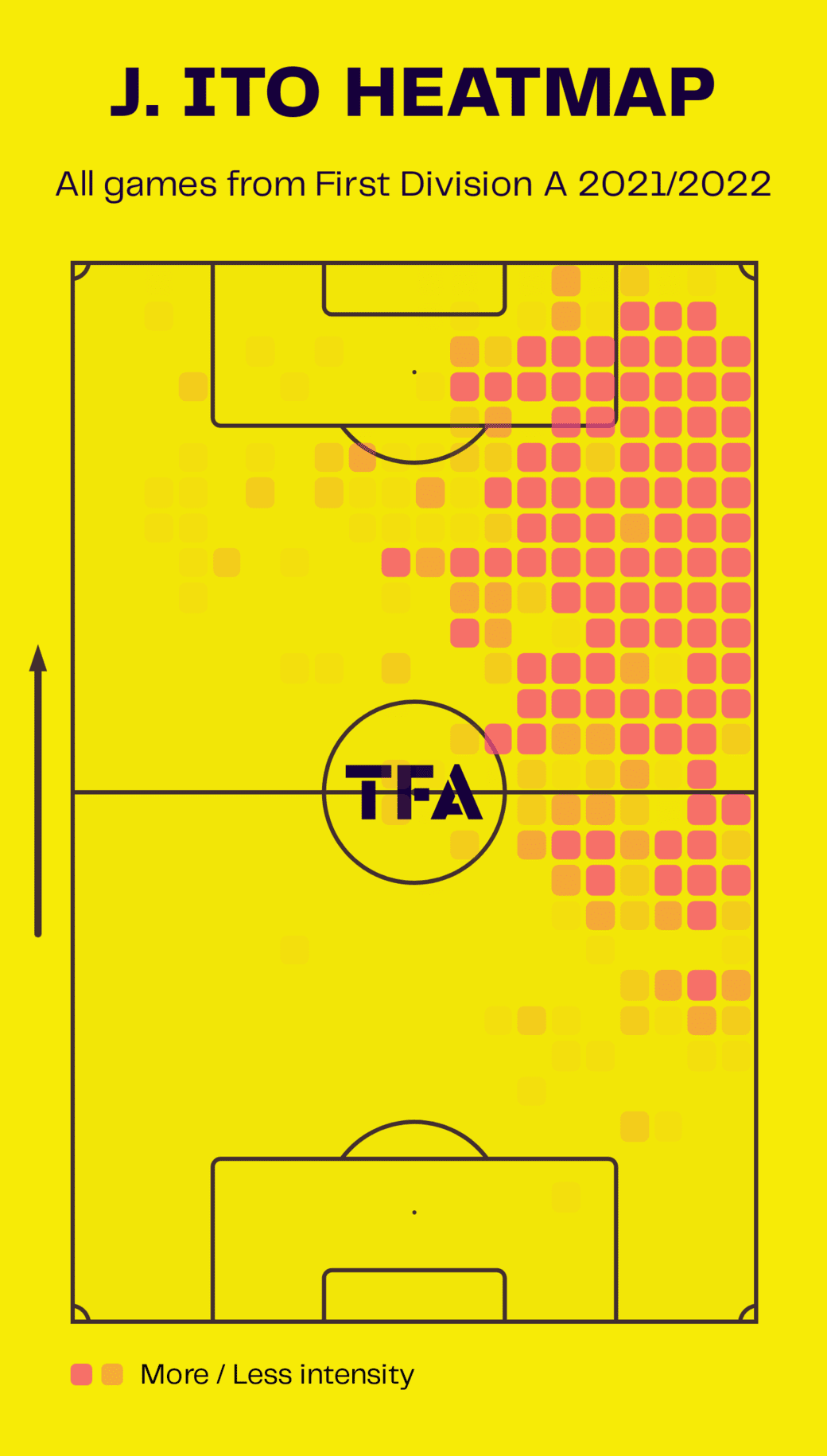
At Genk last season, Ito primarily played as a right-winger, as previously stated. He tended to stay quite wide, as the heatmap in figure 1 indicates, holding the width for his side in the final third.
Genk used a 4-3-3 shape most often last season and, crucially, Ito and the team’s left-winger played on either side of centre-forward Paul Onuachu. The Nigeria international has been a hit at Cegeka Arena since joining De Smurfen from Midtjylland in summer 2019, and his link-up with Ito played no small part in both players’ respective success in Belgium.
To understand Ito’s role at Genk, we need to understand Onuachu. For an in-depth look at the striker, we’d recommend checking out our tactical analysis piece from May 2021 which goes into detail on the 201cm forward’s style of play.
In short, however, as his height would lead you to believe, Onuachu provides a major focal point for his team. It’s common to see Genk going long to him to gain territory, rely on him to hold up the ball and wait for support to join him upfield and use him as a target when aiming to escape from pressure.
Additionally, the vast majority of Onuachu’s actions come inside the box. He’s not heavily involved in the build-up of attacks, rather his primary role is to use his off-the-ball movement to be in a position to finish off attacks when the chance arises.
His physicality and intelligent movement are key for this role. So too is the performance of the playmakers around him whose job it is to provide the striker chances and exploit his strengths in the box. Ito performed this role to a great extent during his time at Genk.
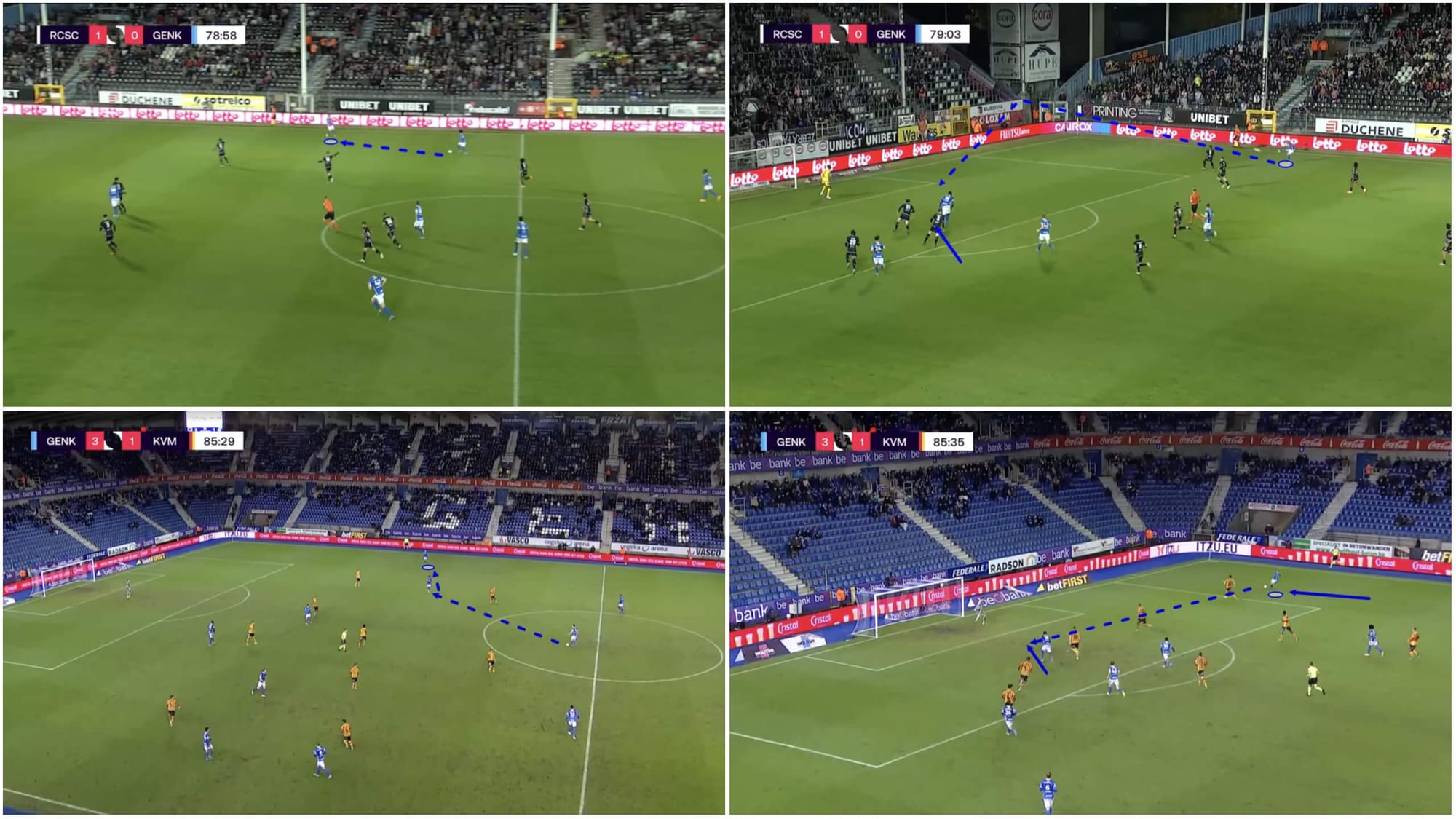
So, while Ito sometimes drifted more centrally at Genk, and his defence-splitting through ball game was evident — it was super common to see him holding the width, progressing into a crossing position and setting up an opportunity for the big man in the box as the two examples (first in the top half and second in the bottom half) in figure 2 demonstrate.
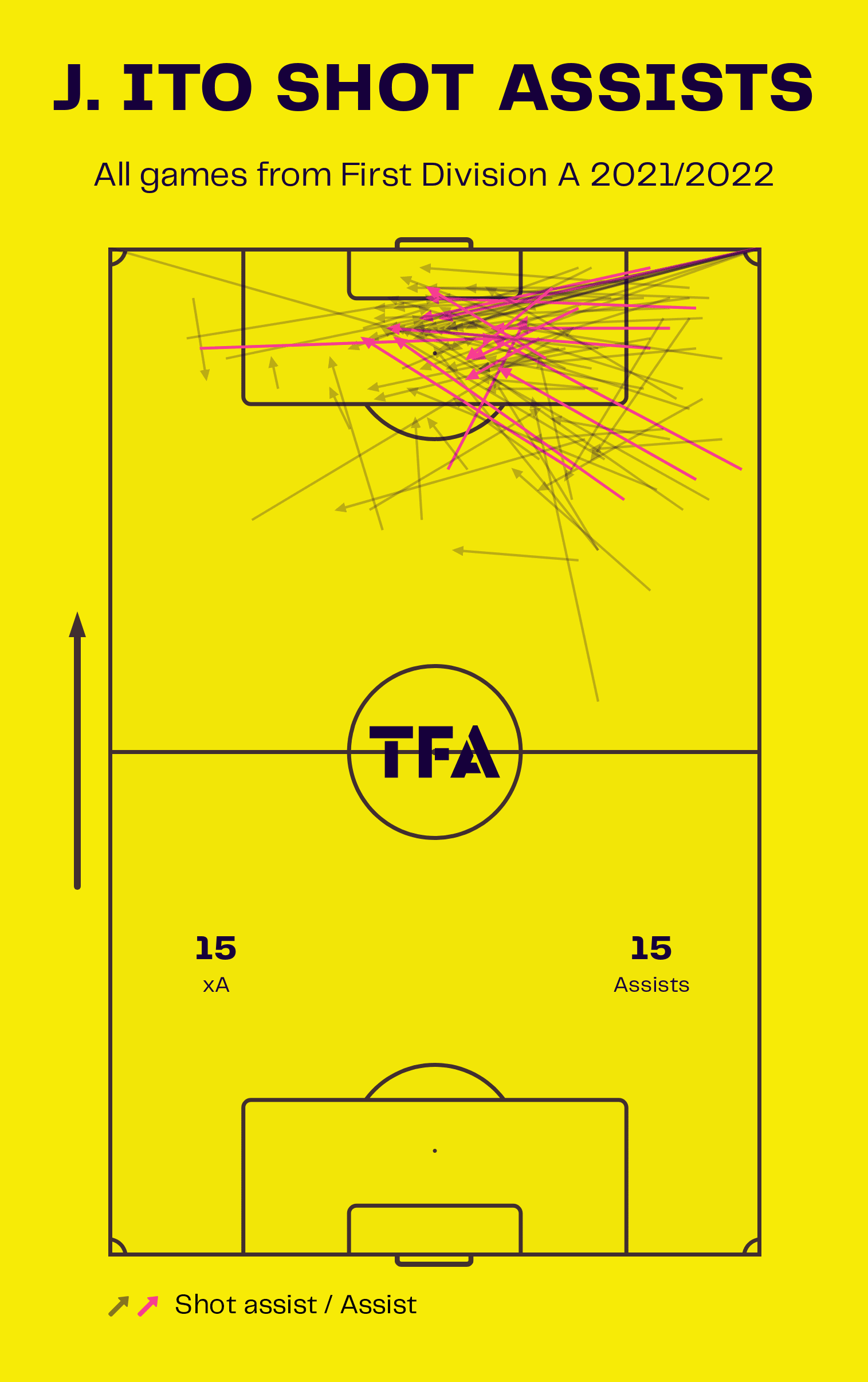
Figure 3 presents Ito’s shot assist map for 2021/22 which further emphasises how the Japan international mostly created via crosses from the right wing.
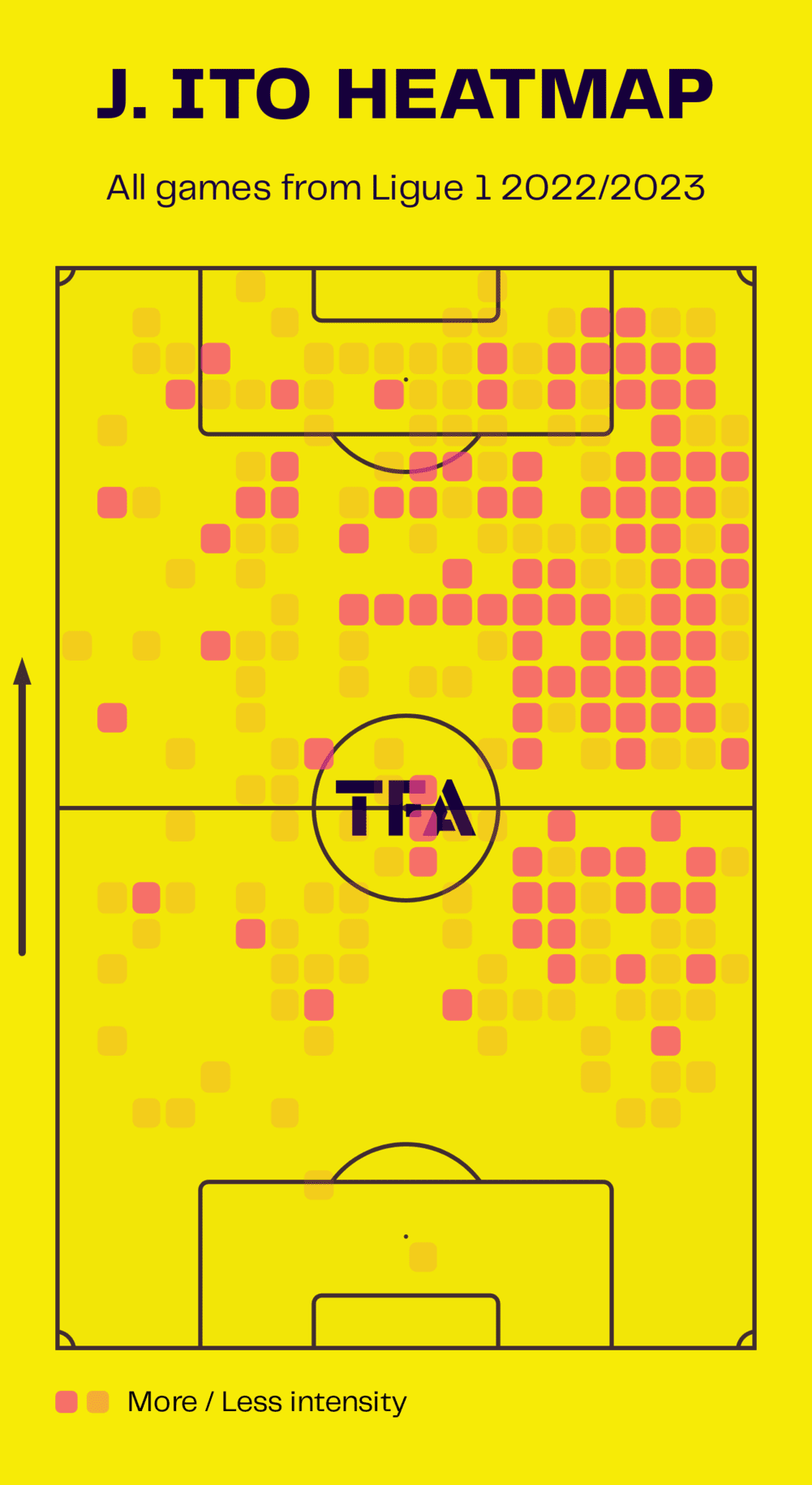
Moving on to figure 4, in 2022/23, though Ito still obviously favours the right side of the pitch, his actions are spread out across the pitch far more now than in the past, with the attacker spending much more time centrally and far less time holding the width right on the sideline.
This is a symptom of Ito’s change in role as he’s been dropped into a different system than the 4-3-3 he was primarily operating in last term.
Reims have primarily utilised two main formations this season — the 3-4-1-2 in which Ito operates as a right-forward and the 3-4-3 in which he operates as a right-winger — with the player’s role in both, especially the 3-4-1-2, seeing him play slightly narrower and get into central areas more frequently.
A big change for Ito is that, at Reims, there is no Onuachu; there’s no major focal point striker to play off of. He’s already lined up with a few different strike partners at Reims, including Alexis Flips and Mitchell van Bergen, both of whom are probably more comfortable on the wings.
However, the most interesting strike partnership that Ito’s been part of at Reims so far is that with on-loan Arsenal forward Folarin Balogun, whom we covered in a recent analysis piece at Total Football Analysis.
This pairing has the potential to work quite well as a two-man strike partnership in the 3-4-1-2, but Balogun, still, is very, very different to Onuachu. Balogun loves to receive the ball to feet, drive at defenders with dribbles and be played in behind the opposition’s defensive line from through balls.
Thankfully, for Reims, though, Ito has great creative passing qualities to spring his strike partner in behind the opposition’s defence when required, which he’s demonstrated frequently this season, playing 2.35 smart passes per 90 — 95th percentile in Ligue 1 among players with at least 150 minutes under their belt to have played at centre-forward this term.
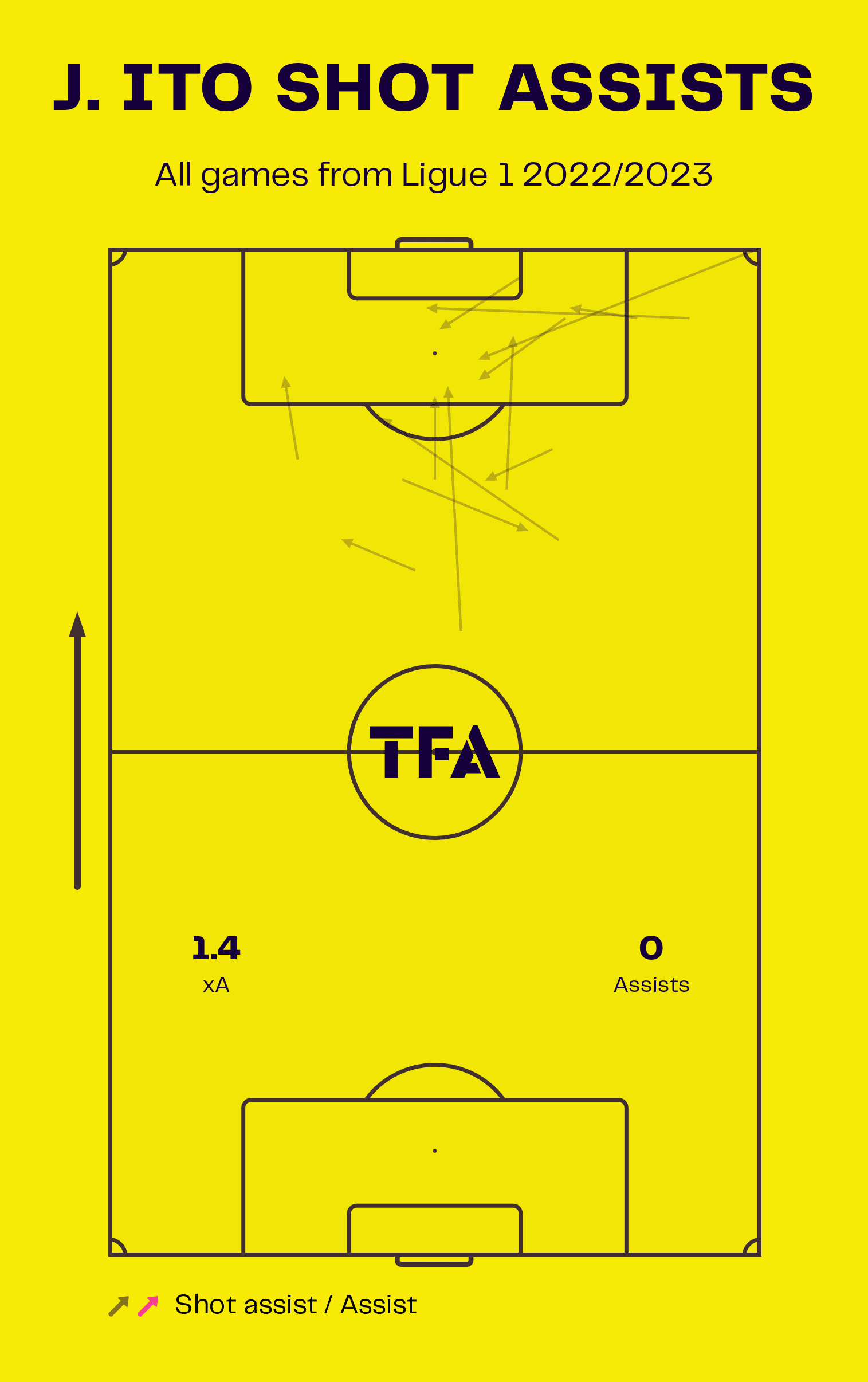
Ito is yet to make an assist for Reims this term but lies in the 86th percentile among Ligue 1 centre-forwards with at least 150 minutes played in 2022/23 for xA per 90 (0.24) — so this is not for the lack of trying and sooner or later, we’d expect the assists to come.
Figure 5 presents Ito’s shot assist map for 2022/23 so far and from this, we can see the different locations of his shot assists compared to 2021/22. There’s far less happening out on the right wing and less crossing going on. Instead, we’re seeing Ito’s shot assists mainly come from central positions, with most of them being defence-splitting through balls for the runner to chase in behind.
Ito in wide areas 2022/23
Of course, Ito still operates out on the right-wing frequently this term, as his heatmap in figure 4 indicates. It’s clear that this remains a key part of the attacker’s game, and this is an area of the pitch in which he’s very comfortable.
Ito has still played plenty of crosses this term so far, though instead of whipped crosses designed to meet a big striker’s head inside the box, most of Ito’s crosses this season have come from higher positions and been more in the style of low, driven, cut-back crosses.
In order to make these crosses, then, after receiving in deeper areas, Ito relies on his pace, physicality and technical dribbling quality.
The Japanese attacker is very quick. He loves linking up with teammates via one-twos where he can drill the ball forward into their feet before sprinting on past them to provide a through passing option in behind the opposition’s defence. In these situations, where he’s just released the ball and has space ahead of him to burst into, Ito’s pace can look frightening.
On the ball too, however, Ito frequently demonstrates blistering pace and some other impressive physical attributes too. The 29-year-old has solid agility and balance which help him to change direction sharply while moving at pace.
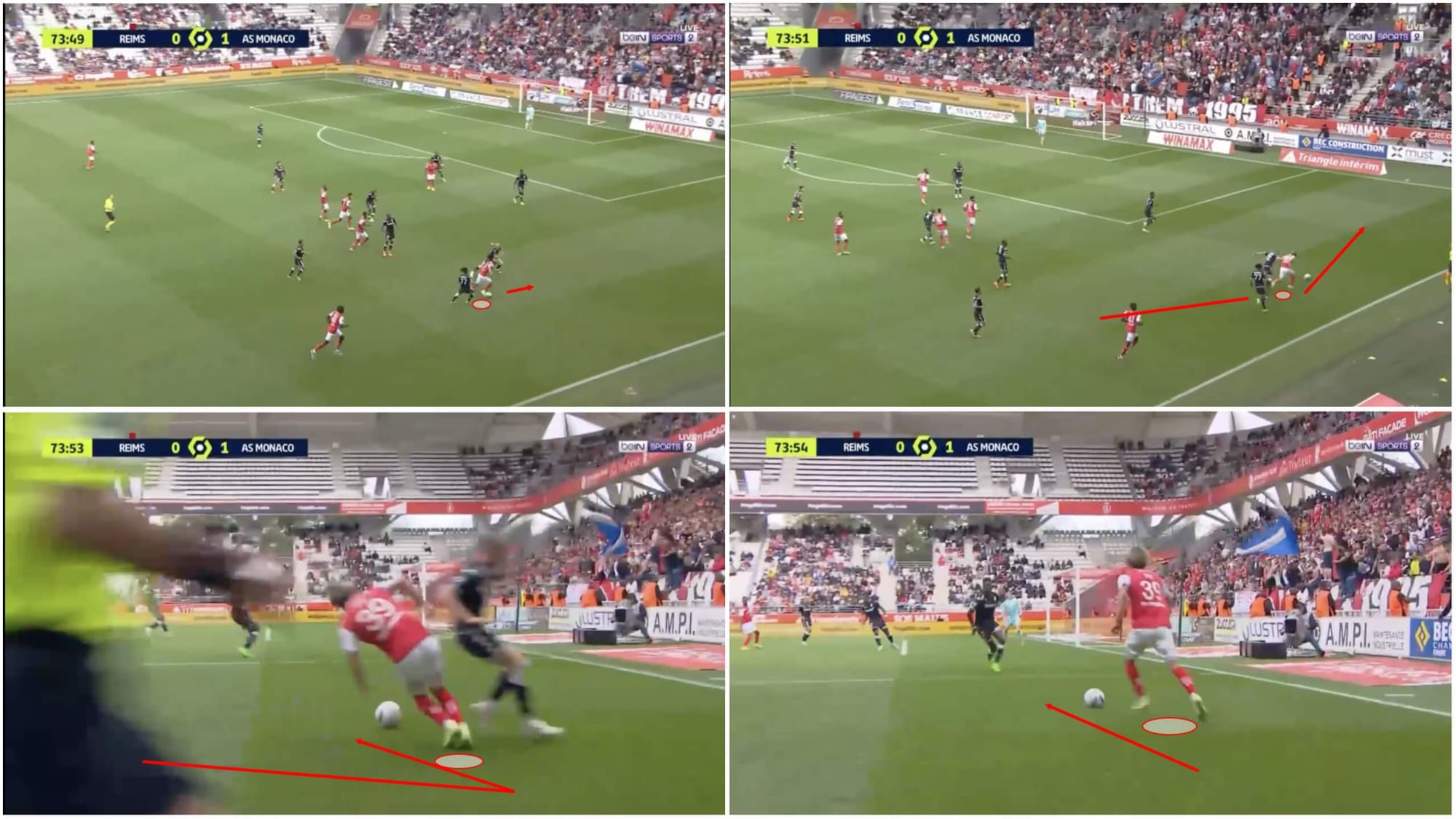
We can see all of this in the passage of play from figure 6. Ito receives and starts to accelerate from a standing position, and knocks the ball ahead into space which gives him the chance to really stretch his legs and chase the ball down before then sharply turning on a dime as he reaches the byline and losing his marker. From there, he can continue the attack and move towards the box.
Pace, agility and balance as we see on display here are favourable attributes for any team to have on their wings.
Ito loves to drop out wide even when deployed as a right-forward so he can isolate himself 1v1 versus an opposition defender. He enjoys finding space off the ball to receive and turn before then driving at the defender(s).
In terms of his dribbling, Ito particularly enjoys knocking the ball around one side of the defender he’s dragged out into a 1v1 while then moving around the other side of the defender to chase the ball down. This is a classic dribbling manoeuvre and one which you’ll regularly see Ito pull off in-game. Still, it’s one that relies a lot on the player’s pace advantage over the opposition defender(s).
Ito has solid technical dribbling ability but undoubtedly relies a lot on his physical qualities in dribbling scenarios. This is fine, for now, as his physical attributes still allow him to thrive in such situations regularly but at 29, this may not be the case for the foreseeable future. Then again, players are increasing their peak years more and more these days so it may not be an immediate cause for concern. Again, he possesses solid technical dribbling quality too but it wouldn’t be right to ignore the obvious importance of physical attributes to Ito’s dribbling game.
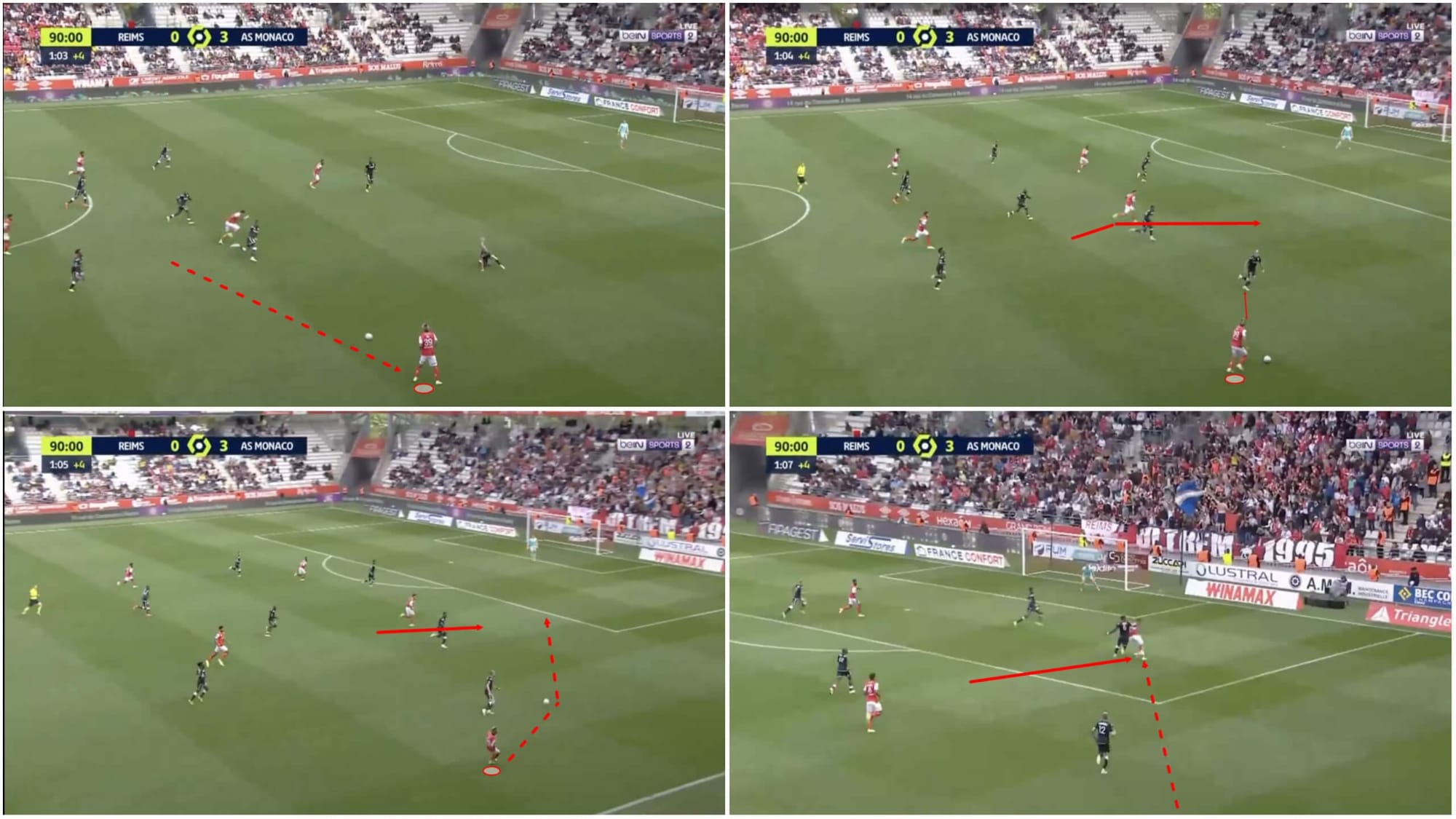
So, It’s clear from the first part of this section of analysis that if Ito’s given space to target in behind opposition defenders, he’s got the attributes and often the intent to attack that space. As a result, it can be dangerous to get too close to him and leave an opening for the player to target in behind.
At the same time, though, Ito is an accomplished creative passer from the edge of the final third too, and this is something he’s demonstrated from wide areas at times this season. It’s not crossing from deep like he would’ve done at times last season but it is another way in which the player can threaten the opposition from the wings and one which suits this Reims side.
Take figure 7, for instance. Here, we see Ito receiving in space on the right with time to turn, get his head up, pick out a teammate’s run in behind the defence and curl a through pass into their path. Firstly, this demonstrates excellent technical quality along with impressive vision. Secondly, this passage of play shows us how Ito can punish defences if they give him too much space while standing off him a bit more, perhaps to protect the space behind them from being exploited.
So, regardless of if defenders get tight to Ito when closing him down and leave space open behind them for the forward to target or if they stand off a bit more to protect that space in behind and give the player more time and space on the ball, he has sharp, polished tools in his arsenal to punish them.
Ito in central areas 2022/23
While Ito has played some games as a right forward that’s seen him operate far more centrally this term than he did last season, he doesn’t remain very stationary up front and enjoys plenty of freedom to roam about from his right forward position to the wings or into deeper positions.
As a matter of fact, it seems as though García encourages the 29-year-old to drop off in between the lines and receive the ball in that space. This seems to be an area in which Ito is extremely comfortable too, similar to the right-wing, making this role a suitable one for him and making the 3-4-1-2 with Ito up top alongside Balogun something we’d love to see García experiment with more as the season progresses.
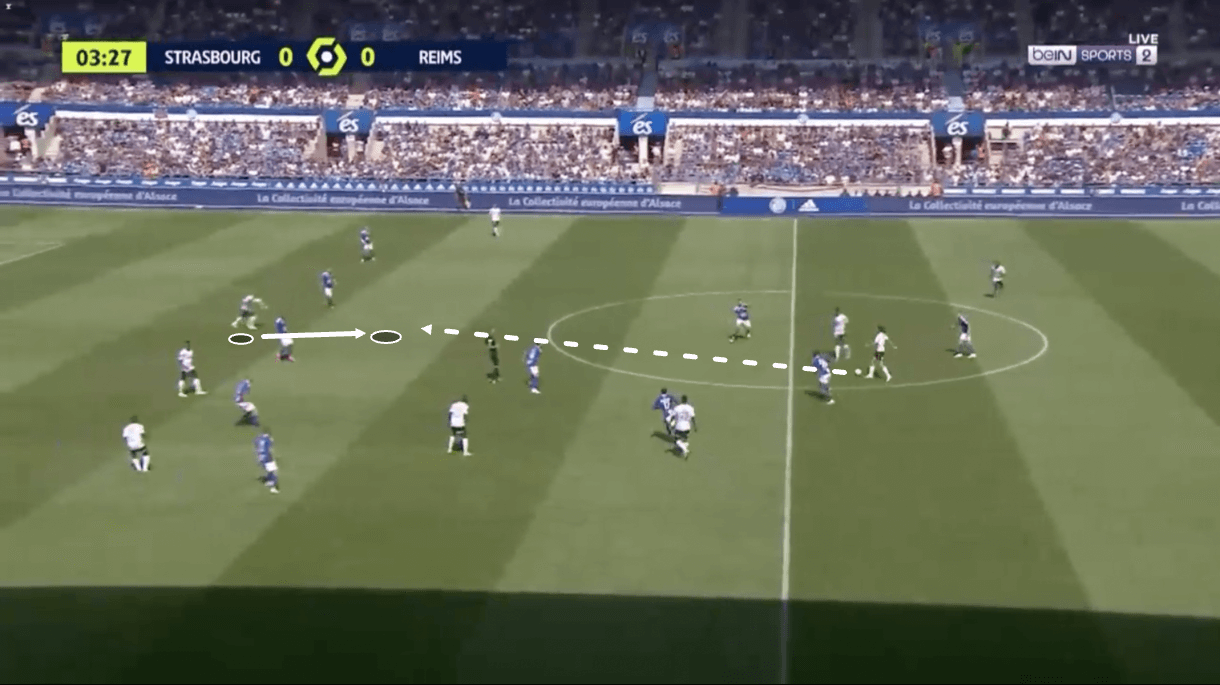
Figure 8 shows a typical example of Ito dropping off from his right-forward position into some space in front of the backline but behind the opposition’s midfield line, for reference.
When he picks up the ball in positions like this, the player’s spatial awareness, ball control, agility and balance (again) are crucial at first, while his vision and creative passing qualities soon become paramount as the attack moves on and the player has turned on the ball.
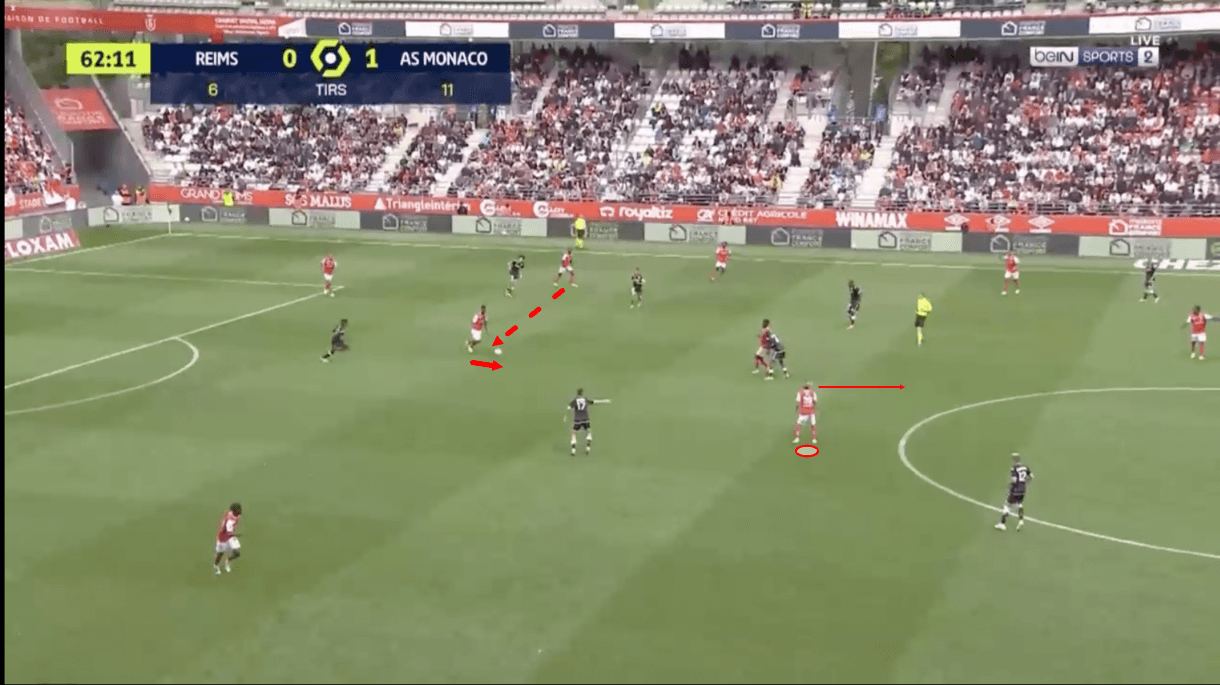
We see another example where Ito has dropped off in between the lines in figure 9, with the player noticeably scanning over his right shoulder just after the man on the ball has taken a touch to knock the ball forward ever so slightly while lining up a forward pass.
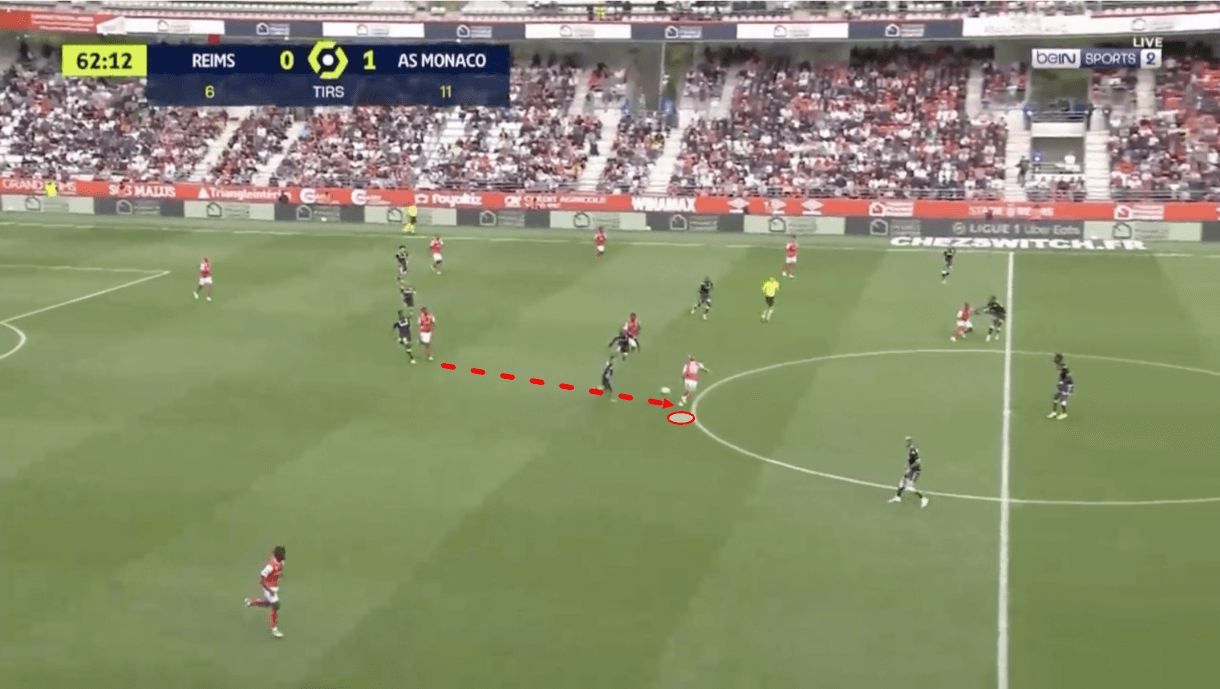
Ito takes in the relevant information on his surroundings to plan his next move. He now knows there’s no incoming pressure from behind and can see where his teammate is positioned to link up with him on his next move. As a result, the player is comfortable receiving on the half-turn before quickly driving the ball forward with the aim of playing his teammate through on goal, as figures 10-11 show.
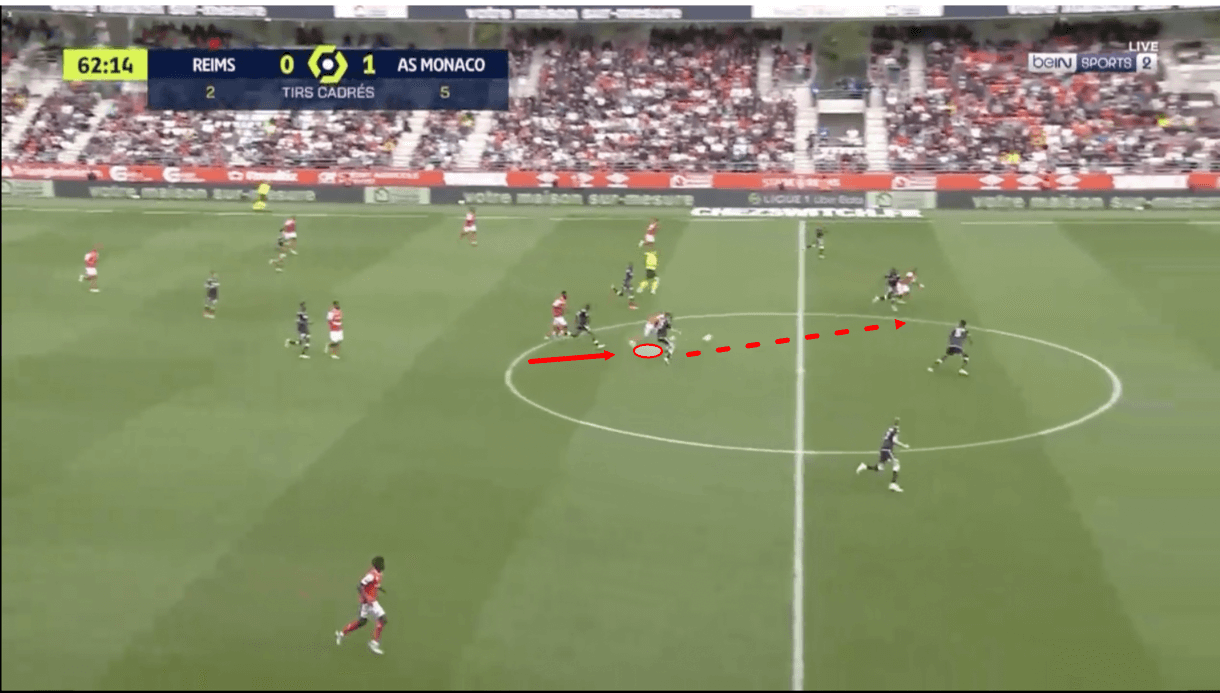
The through pass is ultimately intercepted on this occasion. However, this passage of play still highlights many key attributes in Ito’s game that lend themselves to success in the player’s tactical role for García — the qualities we mentioned earlier when discussing figure 8.
Ito is excellent at taking the ball on the half-turn at pace as we saw in figures 10-11. This is a very noticeable strength in the 29-year-old’s game that particularly stands out when he plays this right-forward role for Reims.
While there are many positives to Ito’s game that help him to perform this role successfully, he’s not perfect and does have some weaknesses too.
To hit on a couple of notable ones for us, firstly he sometimes has a tendency to rush the play a bit too much, leading to, for instance, a through pass being played a second or two too early, before the runner is really ready for it, which can often then result in the attack just breaking down.
So, there’s room for Ito to develop that sense of when it’s the right time to play the ball and when he should just hold on for an extra moment and wait for the perfect time to strike.
Secondly, Ito sometimes fails to set himself in a stable position with feet shoulder-width apart as he receives the ball to feet. This can make him vulnerable to pressure from behind and can make it easier for the defender to unbalance him and ultimately nick the ball away from him to kill the Reims attack.
Conclusion
To conclude this tactical analysis piece, overall, we like Ito in his new role at Reims and look forward to seeing how he continues to develop during his time under García’s tutelage.
So far this term, the 29-year-old has been one of Ligue 1’s most influential attackers on his team’s play. Given this period of his career has just started, there’s still plenty of scope for changes to occur in the player’s role under his new coach, so this will be an interesting one to keep an eye on over the course of the campaign.





Comments